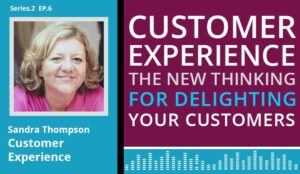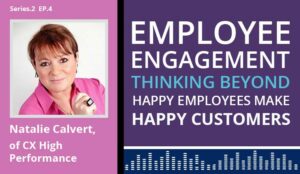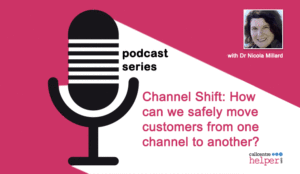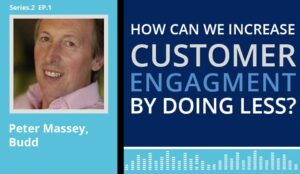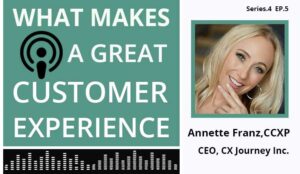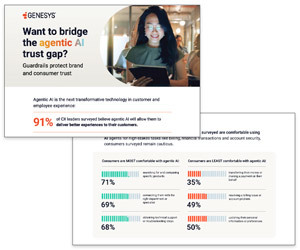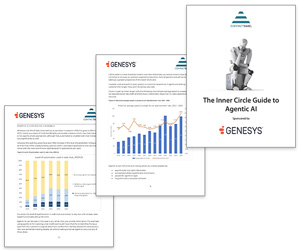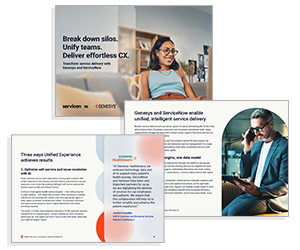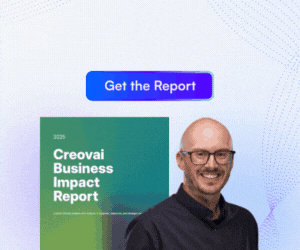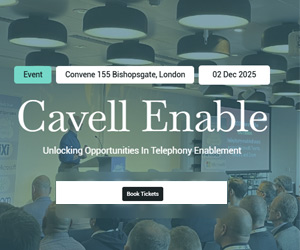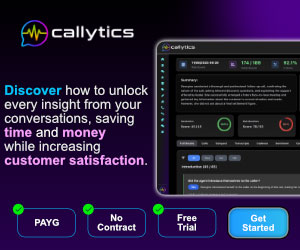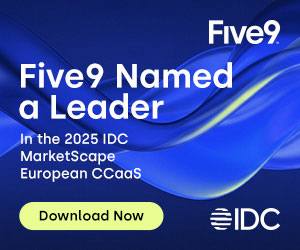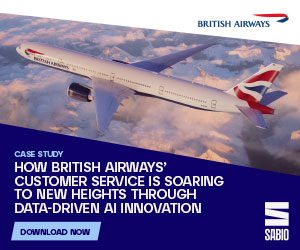The Contact Centre Podcast: Episode 12
In this episode, Sandra Thompson, the founder of the management consultancy Exceed All Expectations, shares her top tips for using emotional intelligence to create memorable customer experiences.

As part of our discussion, we also talk about mapping the customer journey, optimising your Voice of the Customer (VoC) programme and the link between the customer and advisor experience.
To listen to the podcast directly from this web page, just hit the play button below:
The Contact Centre Podcast – Episode 12:
Customer Experience: The New Thinking For Delighting Your Customers
This podcast was made possible by our sponsor, Genesys.
Podcast Time Stamps
- 2:01 – Customer Journey Map Mistakes
- 5:20 – Customer Research Activities
- 9:59 – Rules of Customer Psychology
- 15:21 – Customer Emotion
- 18:01 – Emotional Intelligence
- 21:22 – Linking Customer and Employee Experience
- 25:28 – Great Customer Experience Examples
Here is a Transcript to the Podcast
Charlie Mitchell: Many brands have now created customer journey maps to lay out their customer experiences. But what mistakes have you seen companies making when putting together these journey maps?
Sandra Thompson: It’s a great question, and I think that many organizations go into journey mapping with the very best of intentions. Unfortunately, though, sometimes they’re up against it from a time point of view, which means that they often have to produce it with a small number of people away from everything else, and it ends up being quite an insular exercise. And what I mean by that is that only a few people’s views are reflected on the map. Customers are very rarely involved, and sometimes because of the amount of time they’ve left themselves, it ends up being more of a process map. Now, obviously process maps have their place, but to get a really fantastic journey map created, you’ve really got to give yourself some time. You’ve got to give yourself some time to think about the type of customers you are trying to attract or you’re attracting right now, and really get into their psyche and understand from their point of view, because after all it is a customer journey map, what steps they’re taking, how they’re feeling, and really see it from their perspective.
So I guess part of it is that they turn out to be process maps. Sometimes they make them hugely complicated, so this is the other end of the scale where people have a bit more time. And when something looks really complicated, the instant reaction is to turn off, because if you’ve got to invest a whole bunch of time to try and decode it, you’re going to lose people.
Charlie Mitchell: I think the fact that these are very insular exercises, as you suggest, that sometimes not even every department is involved, so they’re being preached to by a separate team, and I think that’s a very key point that you bring up there. And I quite like the idea of creating customer promises and commitments, and as you go through your journey map, meeting those at every stage so you hit the right values that customers were attracted to you in the first place. Would you agree that this is a good thing to do?
Sandra Thompson: Absolutely, and I think what you’ve touched on there is, why are you even doing this journey mapping exercise in the first place? Are you really truly looking to investigate what your customer is doing across all of your touchpoints? Are you truly intending to talk to other departments to ensure that some changes are made in order for improvements to happen? I mean, with the amount of data that’s available now, you are going to be able to see certain types of behaviour, but what you’re not going to see is the reason why. And your point around people feel that they’re being done to, it’s true. We all want autonomy, we all want some mastery, and if we feel that we’re being involved in a process, we’re far more likely to see things that we haven’t seen before and we’re more likely to adopt the changes that are required to actually get better customer satisfaction. Not even satisfaction, more kind of customer engagement and the emotional connection.
Charlie Mitchell: Absolutely. And you mentioned there the value of using data to its best potential, whilst customer journey mapping, and contact centres have voice of the customer programmes to collect data to work from. So what advice do you have for building voice of the customer programmes to better inform these journey maps?
Sandra Thompson: Asking the most relevant questions, and if you could see me, you could see that I’m smiling at your question, because it’s kind of rubbish in, rubbish out. You have to ensure that you’re designing the most appropriate question in a way that will get you the most valuable feedback. I’ve spoken with Nicola from Volvo on a number of occasions about this, and they’re really careful about asking the right type of question, because actually they have a whole bunch of data they already hold. So why ask some customers things that you already know? That’s one thing. So make the most out of the questions that you’re asking, and also just be really careful on how the responses are coming back to you and that you are correctly interpreting what you’re hearing.
You know, I see VOC programmes where businesses are making massive decisions based on a combination of data that actually doesn’t mean what they think it means. So I guess from a practical perspective, really understand what you’re asking and when, really understand all of the different opportunities to get that insight, that gives you as much of a 360 view as possible, and the really important point is ensure that the people in your organization have bought into this thing. It’s another case of, if you get a vendor involved, how have certain departments been involved in that? How will they decide to utilize the data that is being made available to them? How will they trust it if, again, it’s done to them?
Charlie Mitchell: I think this idea of having organizational buy-in is very important as well in terms of aligning communications. So if we’re going to run surveys and things from the contact centre, we also need to know what marketing are doing, what the research team are doing, so that we don’t survey-fatigue customers. And you hear other terms around like junk mail, and this shouldn’t be happening in your organizations, so I think that’s a key piece of advice, as well as looking for other techniques. Maybe social listening. Would you agree?
Sandra Thompson: Yeah, absolutely. And what you’ve actually hit on is something that’s very dear to my heart. Strategic planning of communications is a really tricky thing to get right, but ensuring that you have the customer’s interests at heart, you know. I worked in one organization where in the end we had to plot everything that was going out to everywhere, because we discovered that one department was sending out all of this direct mail. Another department was sending out a whole bunch of emails. I mean, we think it’s hilarious, but actually these are basic things, right? So definitely from a strategic perspective, you should find the most appropriate listening post. I think social is fascinating for the variety of insight that you’re getting.
Sometimes I worry a little bit about our reliability on language. I went to a conference not long ago, which was all around emotion in customer experience, and while of course we’re getting much better at listening, when we rely on just words without the context of how those words have been used, and if we don’t actually get customers in front of us face to face to look at their body language, to understand their tone of voice, to understand what they’re not saying, let alone what they are saying, and I think we need a rounded picture.
So my point on the VOC stuff is, of course get the data that you can that’s really valid. Just maybe check in on some particularly contentious points with live customers and just get to a more sophisticated level of understanding what’s truly going on. Because if you just rely on words without understanding the sentiment behind those words, you might make some decisions that perhaps aren’t the most appropriate.
Charlie Mitchell: I think that aligns to another point of just using surveys as your only feedback method. Make sure you add in a variety of different techniques so you get different perspectives. And I think that’s very key. And you also touched a little bit on emotion there, which is something we will come back to. Now, I want to focus a little bit on customer psychology and applying that to the customer experience. Do you think enough brands apply the basic rules of psychology in their customer experience?
Sandra Thompson: In all honesty, no, I don’t think they do. I’m really heartened to know that some organizations are bringing chartered psychologists in to help them understand what’s going on. But actually when you think of the area of psychology, the human brain is hugely complex, and I think with the speed at which we expect our marketeers particularly, and many of our frontline staff, to make instant decisions without understanding a bit about how the brain works and how behaviour is influenced by certain things, it’s really difficult for brands to make that leap into far more intuitive decisions.
So what I’m really saying is I don’t think that we look enough into psychology. I think the amount of insight we have today with MRI and the advancements in neuroscience, we can be far more intelligent about the way that we attempt to connect with our customers. Even simple things like NLP, and that’s neurolinguistic programming, using language and tone of voice with particular language in a certain way can significantly reassure customers, for example. I know that some brands are doing it, but I don’t think enough are doing it, because I’m not sure that they fully grasp that it’s not just a woolly, soft approach. There are some hard statistics that prove that there is a great benefit, massive profits to be made when you can fully tune in to your customers, either before they’ve come to you or during their journey with you.
Charlie Mitchell: And it’s even some of the simplest stuff that you’ve mentioned there. There’s simple human biases that we just take into consideration. I mean, one that comes to my mind is cognitive overload. There was a brand that I remember, I can’t remember which brand it was, but they cut down the number of jams that they sold in their stores, and customers were purchasing more because they didn’t have to choose from so many options. It was just either choose this or this. Are there any other kinds of basic psychology principles that you would advise brands look into?
Sandra Thompson: I think choice is definitely one. Your point around cognitive overload is absolutely right. The simplicity behind everything is really, really key, and while you think you might be doing them a disservice because you’re not offering a wide range, you are making their life more simple. I think one of the things I find fascinating is something called peak-end rule, and actually this is a bit of behavioural science. There’s a part of the brain called the amygdala. The amygdala is one of the oldest parts of the brain, and that’s really about flight or fight. So all the time it’s scanning, I mean, it was pretty relevant when we were living in caves and looking out for sabre-tooth tigers and stuff, but it’s not so relevant today. However, it’s looking out for, it’s scanning the horizon all the time for things that we should be scared of.
And as a consequence of that, if we have an experience that doesn’t fit with our expectation, it sets the amygdala off, because it’s saying, “Hold on a minute. It was meant to be like this. It’s not like that. Right. Everyone get scared. Stand by.” As a consequence of that, you get people complaining, people getting anxious, getting frightened or concerned, and you get complaints, you get more contact than you should have, because people want reassurance. And what this peak-end rule is basically saying is that if everything is running as it should do, and there are some nice surprises, so while it’s not quite what you expected, it’s an okay thing, so the amygdala kind of calms down.
When something bad happens, it can wipe out all of the good things that have happened in the experience that you’ve had. And if at the end the thing that happens is bad, all the things that have gone before are wiped out, but in a similar type of way, if you have an experience that has been bad and then there’s a really effective recovery, so something along the journey has been really bad, but then at the end someone deals with it really well and gets your confidence back, that bad experience is wiped out. So, from a psychological perspective, there are massive opportunities for businesses to recover far, far more effectively than I think that they’re using. There are brands out there that take recovery very seriously. I know that John Lewis and Waitrose, they make this a really important point, but I think if only we could recognize when our customers are starting to feel a little bit edgy about something, we could prevent them going into a full amygdala attack high deck, which means that we would prevent them from feeling concerned and perhaps switching brands or making complaints.
Charlie Mitchell: I love this point about the peak-end rule, because it’s something that I have too heard a lot about recently, and I just want to use this to go back to my first point about customer journey maps. Do you think that when creating customer journey maps, businesses should consciously be putting two big peaks of emotion, one somewhere in the middle of the journey and one somewhere at the end?
Sandra Thompson: You touched one of the big areas of neuroscience with this one. Okay. So there’s a phenomenal woman in the States called Lisa Feldman Barrett. She wrote a book, I think it was last year, actually, about how emotions are made. And what she basically says is that emotions are a simulation. You can’t predict how you’re going to feel. It just pops up depending on the context, depending on the experience that you’ve had, and that every single person, I know that this is kind of obvious, but I think the customer experience people and organizations forget this, every single emotion we have is unique to us. So while you may decide to plot, “We’d like to have this type of emotion and we’re going to stage this type of activity to create this emotion along our journey map,” it’s not going to work, because everyone’s response to different stimulus is completely different.
So it is one thing to say, “We get lots of complaints about this area and we need to address these complaints so that people don’t feel so bad,” but as far as planting certain experiences along a journey in order to hope that people feel ecstatic and really delighted, it’s the wrong way to do it. I really believe that if your frontline staff and the people who are designing your experiences have what’s called emotional intelligence, then I think that they will be far more in tune with the individual’s expectation and they’ll be able to influence the individual’s emotion. This isn’t a cardboard cut-out. You can’t go for something generically and hope that everyone will feel positive about it. It doesn’t work that way.
So coming back to your initial question of prompting something on customer journeys in order to get a particular response, our brains don’t work that way, and I think it’s a much better investment to ensure that your staff are equipped with the skills of emotional intelligence. You know, this whole theory that Daniel Goleman brought about in the mid-nineties.
Charlie Mitchell: Yeah. I think, having heard you say that, I’ve realized that I’ve been particularly guilty of over-applying the peak-end rule to customer journeys, so that’s enlightened me quite a lot there. But one thing that I do want to pick up especially is the value of emotional intelligence that you’ve just put forward. How would you suggest that we better coach emotional intelligence within the call centre to better provide great customer experiences?
Sandra Thompson: So another great question. I think people understanding what emotional intelligence is, is really critical. I’ve spoken to a few people who say, “You know, emotional intelligence, it’s empathy, right?” Well, yes it is, but that’s one of 12 component parts of emotional intelligence. So while I’m not kind of disregarding it, I’m saying, “Well, actually, it’s more sophisticated than just that.” I’m studying at the moment one of Daniel Goleman’s coaching courses, and actually it’s really opened my eyes to the influence that this particular skill can have not only in your professional life but also in your business life.
So coming back to your question around contact centre staff, the key thing, the foundational point for all of this is having self-awareness, so understanding yourself and also understanding the emotions that arise in you. And while that all sounds a bit very whatever, really being able to identify how you feel about certain things is hugely, hugely helpful. I really believe that particularly in a call centre environment, there is a lot of what’s called emotional contagion. And what emotional contagion means is that you have a call centre agent who’s on the phone throughout the day, and they are subject to the emotions of all of the people that they speak to or they’re in webchat with, or whichever it is. And a certain amount of those emotions will be caught by the agent if the agent doesn’t have another emotional intelligence capability, which is around self-management, and being able to be resilient to that emotional transmission, as it were.
So if agents are able to understand themselves, to have self-awareness, also to be taught the skills to help them manage how they feel and also to understand if they understand their own emotion, they may also be able to interpret the emotion of others, and understand that it’s not their doing that someone might be angry or cross, that actually this is something going on in that individual’s life. And through some of the other things that come out from the emotional intelligence competency model, which is all around influence and coaching. Having these skills will enable them to influence how the caller or the person who’s on webchat or email is actually behaving themselves, and through whichever communication channel they’re using, it’s highly likely that they will be able to calm someone down or excite someone in a far more effective way because they know how it feels themselves. I hope that makes sense.
Charlie Mitchell: Yeah, absolutely it does. And I really like the idea of kind of self-management. I think one of the keys to ensuring that advisors are very aware of their emotional responses is to keep them engaged. Do you think this is something that contact centres fail to appreciate, the link between keeping employees engaged, so that they can self-manage their emotions well? Do you think it’s something they don’t appreciate, that link with the customer experience?
Sandra Thompson: Yeah. Again, another great question. You know, whenever I look at any call centre statistics, what I’m alarmed at is the degree of churn. There are stats around the seasonality of certain industries, but it concerns me greatly that when you have an individual taking responsibility for the brand and the things that have happened with that brand, what’s their purpose? Do they really understand the massive difference they are making to someone’s life? Do brands really tell their staff, “Do you know what, today you are going to make a difference to these individual people’s lives”. When I call up certain brands, I can tell whether someone’s engaged or not because they are able to connect with me emotionally. They normally go just above and beyond what I’m expecting them to do, and I leave that call feeling like a million dollars.
So understand that human beings want to have a purpose. They want autonomy. They want to be able to do the right thing. And often in organizations, there are such incredible policies and procedures, it means that individuals don’t feel engaged because they feel hemmed in. They feel like they’re not actually able to do the right thing because the company rules don’t allow them to do so. I mean, how on earth are you going to be engaged if you have an individual or a customer who wants you to do something that to you seems completely logical, and yet you have to tell them, “Sorry, I can’t do that.” These are really critical points, right? There’s a fantastic book called The Effortless Experience written by Matthew Dixon, Nick Toman and Rick DeLisi where one of the authors talks about giving individuals in call centres the ability to do what’s right, and that gives them the opportunity to really make a difference, to really live out their purpose of helping.
And I’m sure that everyone listening to this podcast will know about Zappos. Zappos, they started out as a shoe company, an online shoe company out in Las Vegas. They now are a multi-billion-pound online retailer with a phenomenal set of people who understand their purpose. Their purpose there is to make people’s lives easier. I mean, how incredible is that? And they’re told that if they fit within these particular cultural values, then they can do what they want. It goes to a point where you kind of think: “This cannot possibly be true,” where one of their calls was over 10 hours. So I’m not saying that any call centres might go that far, but can you imagine? These guys never leave Zappos because they love the fact that they’re part of a group of people who have a shared interest. Their team leaders look after them. The founder sits in an open-plan office with all of them just in the middle, and takes questions at any particular point. I mean, wow. A flat structure, people able to do the best they can, means that they are thoroughly engaged because they’re coming to do good, not just to follow a bunch of rules.
Charlie Mitchell: I think this is a very good point, and these churn rates that you allude to there, it’s an issue that almost every contact centre has now, especially with the new millennials hopping from job to job, as they do. And I think the lessons that we can learn from other organizations like Zappos, maybe not to the extent of 10-hour calls, as you say, are becoming more and more important. But just moving back quickly to the customer experience, even though the employee experience is very important to the customer experience, which brands would you point to in terms of offering great customer experiences?
Sandra Thompson: It’s an interesting question, isn’t it? Because when I’m asked this question, I normally answer it in two ways. So I’m going to do the same. For me, Amazon offer a great experience in that I want a book, I’ve ordered it at seven in the morning. It’s coming later that day. So from a functional, “I want something, I’m going to get it, it happens,” that’s a good experience. However, I think that the people part of experiences is a different perspective, again.
So John Lewis has been one of my favourite brands for a very long time. The fact that they use what’s called psychological safety, in that they create this trust, you feel safe working with them, and again, from another psychological perspective, people are risk averse, right? So if they invest a certain amount of money, they want to know that everything’s going to be okay, and they’re a little bit hesitant. I spend money with John Lewis every year on all sorts of stuff, knowing that they’ve got my back and knowing that if I’m not happy, they will deal with it. So there’s a massive amount of trust. And for me that’s a brilliant customer experience.
Another example is Nationwide, I’ve actually dealt with them on a number of channels. They’ve sent me emails. Their letters are beautifully written. I’ve been in, I think, to a couple of their branches. I haven’t meant to, but I thought, “Oh, this is quite interesting. I’ll go and check such and such.” And their staff are incredible. They’re kind of gentle, but they’re efficient, and they’re friendly, but not too much in your face, from a kind of financial perspective. I don’t know where they’ve got these guys from, but they are genuine and they’re authentic and they really want to help. So whoever’s looking after the recruitment for Nationwide, I take my hat off to you.
And finally, I think Waterstones. Their staff, again, and the way they provide additional information for you, how they are encouraging of individuals to investigate and explore. Their knowledge is quite extraordinary. And certainly as I buy a lot of books on Amazon actually, but equally I still do pop into Waterstones because I feel so fantastic when I go into my local branch and the people are interested in what you have to say, and they’re interesting because they have so much value to add to the customer experience, which you just don’t get from the transactional effort that Amazon puts in. But can you see there are two categories here? There’s the kind of convenience bits, which I love, and then there’s the real emotional connection that I get from the people who work in these other brands that is incredible.
Charlie Mitchell: I do particularly relate to the Waterstones point there that you’ve made, because in theory, with the rise of Amazon, Waterstones should be struggling now, but they’re not. Well, maybe. I’m not entirely sure on that point, but whenever I go in there it’s very full, and I’ve spoke to a member of staff, I picked up a Margaret Atwood book, and we spoke about Margaret Atwood for about five minutes. It was just the knowledge that they have in certain areas still is very amazing and very helpful.
But just finally, I know we’ve covered lots of different topics today and that you’re going to put together your own customer experience course. Just want to tell our listeners a little bit about that?
Sandra Thompson: Yeah, sure. So this course is a kind of advanced stage for people who want to really either validate what they already know, or those people who are in marketing roles or in customer service-type roles and they want to go into customer experience. Now, this is the kind of course I wish … I’m bad to say this, aren’t I? But this is the kind of course that I wish I had joined before I took on a customer experience programme. I learned the hard way, because I had to work it out for myself, but this course is a blend of academic theory and some phenomenal guest speakers. So the idea is that you learn actually all about the behavioural science, you learn about the psychology and the neuroscience, things like emotional intelligence, things like psychological safety. We do quite a lot of stuff on employee engagement, voice of the customer, journey mapping, all that kind of wonderful stuff.
But then we’re joined by some extraordinary speakers. Quite a range of people from CAT, from John Lewis. We’ve got Richard from a behavioural science unit. There’s Tony Barry from the National Trust. He’s the Visitor Experience Director. We’ve got Nicola from Volvo, and they come and they share their experience and their stories, and they share warts and all. And certainly when we’ve run the pilot of this course last autumn, the thing that the participants loved the most was to be able to put the theory into the practical examples that these guys were bringing, and then to take that blend back to their own workplace and try stuff out for themselves. This is a kind of course that should help people either find new ideas or at least develop the foundation of what they should be doing for the first few years of their career.
Charlie Mitchell: And I did take a look at the course’s agenda as well, and it was very impressive, I must say. It was very forward thinking, with this idea of emotional intelligence and customer psychology. It’s very different, I would say, and the speakers, I would agree with. I saw Adrian Swinscoe was another person that you have in line who’s somebody who writes quite frequently for Call Centre Helper, and is a very good speaker. So yeah, I would agree with all of that. And just one final thing, Sandra, where can our listeners go if they want to kind of find out a bit more about your course, or if they have any questions related to what we’ve discussed today?
Sandra Thompson: Well, they could do one of two things. They can check me out on LinkedIn, so Sandra Thompson at LinkedIn. I’m kind of billed as a CX educator, so you should be able to find me there. The actual course is hosted by Pearson College, so if the guys Google Pearson college and short courses, Applied Customer Experience, they’ll definitely find the full range of information there. The other thing quickly to add is that the course offers a certificate, and I know that that’s one thing I always want whenever I go on courses, is a badge at the end, so everyone knows I’ve been on it. And because it’s a five-day course split between three days initially, and then you get a break to test stuff out, and then you come back for two days, get a certificate, right? Make sure that everyone knows in your organization that you’ve been experiencing this thing. So yeah, that’s where they should go. Check me out on LinkedIn or Google Pearson College London and Applied Customer Experience.
Author: Jonty Pearce
Reviewed by: Jo Robinson
Published On: 18th Nov 2019 - Last modified: 26th Sep 2025
Read more about - Podcasts, Charlie Mitchell, Customer Experience (CX), Genesys, Podcast, Sandra Thompson





